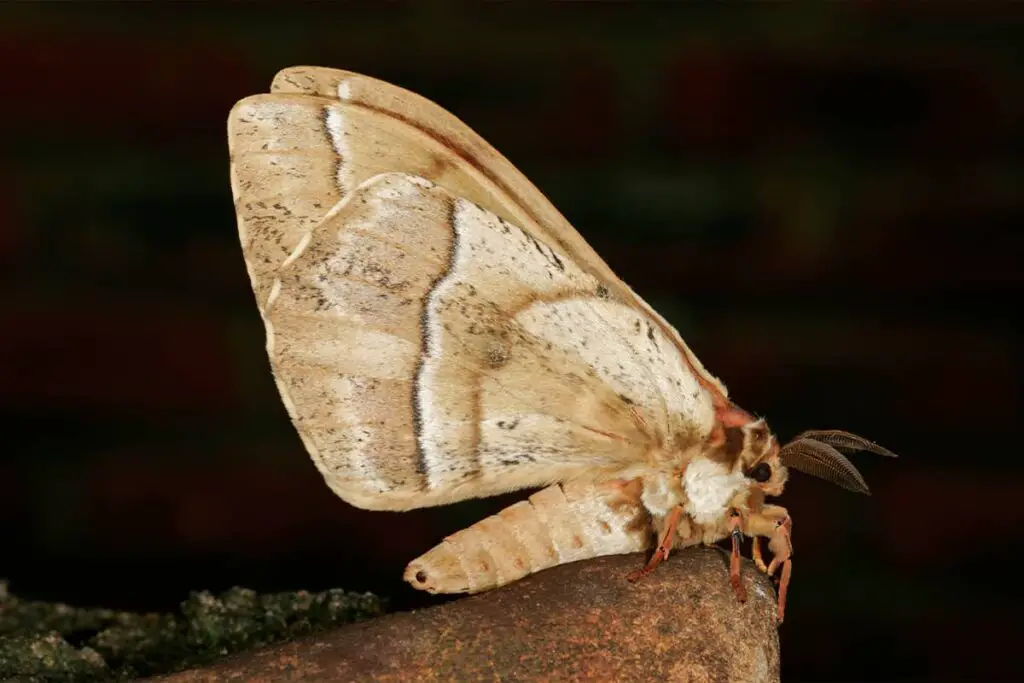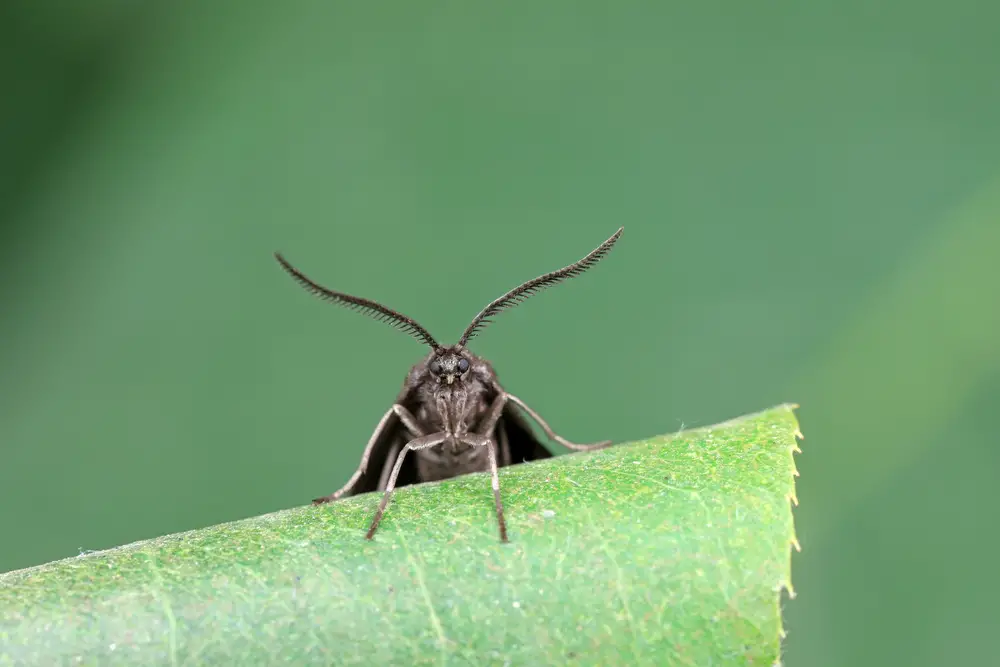
When you discover a moth fluttering around your room, you might wonder just how long it can call your space home. These typically harmless insects can live varying lengths of time indoors, depending on several factors, including the species and the availability of food sources. Generally, the lifespan of a moth inside a house ranges from a few days to several weeks. Adult moths, for instance, live primarily for mating and egg-laying and typically survive for about 1 to 2 weeks under indoor conditions.
Understanding the life stages of a moth is key to determining their potential longevity in your living space. For example, moths spend part of their lifecycle in the larval stage, which can last significantly longer than their adult stage, especially if your room offers a supply of materials like natural fibers for them to feed on. The condition of your environment plays a role as well; moths thrive in dark, undisturbed areas where they are less likely to be removed or harmed.
The idea of having moths inside might be unsettling, but remember, they’re generally looking for places to mate and lay eggs rather than aiming to settle down long-term. And while it’s unlikely moths inside your home will stay alive for months on end, there are steps you can take to prevent and control these winged visitors effectively, should you prefer they take their leave sooner rather than later.
Moth Lifespan Fundamentals
Determining how long a moth can survive in your space hinges on species-specific traits and external conditions. Here’s how these factors contribute.
Lifespan Variations by Species
- Clothes Moth: Typically lives up to 4 weeks as an adult. Life cycle details
- Silkworm Moth: Has a brief adult stage lasting about 1 to 2 weeks. Silkworm longevity
Adult moths generally have a life span ranging from a few days to several months, heavily dependent on their species. While some like the silkworm moth have notably fleeting adult lives, others like the common clothes moth might grace your wardrobe a bit longer.
Factors Influencing Longevity
- Temperature & Humidity: Stable, moderate environments may extend lifespan.
- Food Availability: Abundance of suitable food sources increases survival chances.
- Predation & Insecticides: Fewer threats in a controlled indoor environment often lead to longer lifespans.
The longevity of a moth inside your home relies on various factors, from the surrounding climate to food access. Your house might create a safe haven from predators and harsh weather, inadvertently encouraging moths to settle in for the long haul.
Survival Factors in a Room
When you’re evaluating how long a moth can survive in your room, several key factors come into play, like the conditions of the room itself, the availability of food sources, and whether predators are present.
Room Conditions
The temperature and humidity of your room greatly affect a moth’s lifespan. Moths thrive in warm and humid environments, as these conditions simulate their natural habitat and facilitate their life cycle processes. If your room is particularly dry or cold, it can shorten a moth’s life. Proper insulation and moisture control can inadvertently create a more hospitable environment for these insects, potentially extending their indoor lifespan.
Moth’s Access to Food
In a room, a moth’s access to food largely determines its survival. Moths typically feed on natural fibers like wool, silk, and cotton found in clothing, carpets, and upholstery. If your room has an abundance of these materials, moths can survive for longer periods. Conversely, rooms that primarily contain synthetic fibers offer less food, which can limit a moth’s ability to sustain itself and thus shorten its lifespan.
Presence of Predators
Lastly, the presence or absence of predators in your room can play a decisive role in a moth’s survival. Common indoor predators include spiders and birds (if you happen to have a pet bird). A room with a higher predator presence increases the risk of moths being caught, effectively reducing their chances of surviving for long periods. Conversely, a space without such predators allows moths to reside relatively undisturbed.
Moth Behavior and Survival Strategies
Moths are fascinating creatures, and their ability to adapt to living indoors along with their unique reproductive behaviors play key roles in their survival.
Adaptation to Indoor Environments
Moths exhibit a remarkable capacity to adapt to indoor environments, which is essential for their survival. Your home can provide a safe haven from predators and harsh outdoor conditions. Moths can alter their behavior to utilize resources in your home, such as finding fabric or food to nourish their larvae. For instance, having a consistent indoor temperature helps moth larvae develop properly, since fluctuations in temperature outside can negatively impact their growth.
Reproductive Behaviors
Reproduction is a critical aspect of a moth’s life cycle, impacting its ability to survive indoors. A female moth can lay hundreds of eggs inside your home, ensuring the continuation of their lineage. These eggs are often hidden within fabrics or in discreet nooks, thus increasing the chances of survival for the young moths. Understanding the reproduction habits of moths can provide insights into how to manage and prevent infestations in your home.
Frequently Asked Questions
In this section, you’ll find responses to common queries about the survival of moths in indoor environments, shedding light on their lifespan, dietary needs, and other interesting aspects of their presence in a room.
What is the typical lifespan of a moth indoors?
Indoors, moths can live for a varying amount of time, but the adult stage typically lasts about 1 to 2 weeks, which is mainly for mating and laying eggs. Factors like climate and food availability can influence their lifespan.
What kind of food sources do moths require to survive?
Moths tend to seek materials that contain keratin for nourishment, such as wool, silk, or even pantry items in the case of pantry moths. In nature, they would feed on plant nectar, but in a home environment, they may be drawn to available food sources which could extend their lives.
Can moths survive for long periods without water?
Moths require minimal water to survive, and they typically get the moisture they need from their food source. While detailed specifics about their water needs are not commonly addressed, it’s understood that moths can manage with minimal water due to their short lifespans and feeding habits.
Is it harmful to have a moth staying in one’s room?
While moths are not dangerous or known to carry diseases, their presence can be a nuisance. Some species may cause damage to textiles and stored items. However, in terms of health risks, having a moth in the room is largely harmless.
What should someone do if they find a moth inside their room?
If you find a moth inside your room, consider removing it by gently guiding it towards an open window. You may also need to inspect for and address any potential food sources or entry points to prevent more moths from entering the room.
Do moths have a tendency to die when resting on walls?
Moths often rest in undisturbed places during the day, which includes walls. It’s not uncommon to find moths that have died in such places, but the act of resting on a wall is not a cause of death in itself. If a moth’s lifespan has ended, it’s by coincidence that they might be found on a wall.
Driven by a passion for those tiny creatures that rule our world, we at Bug Domain strive to be your go-to resource for information on insects.




